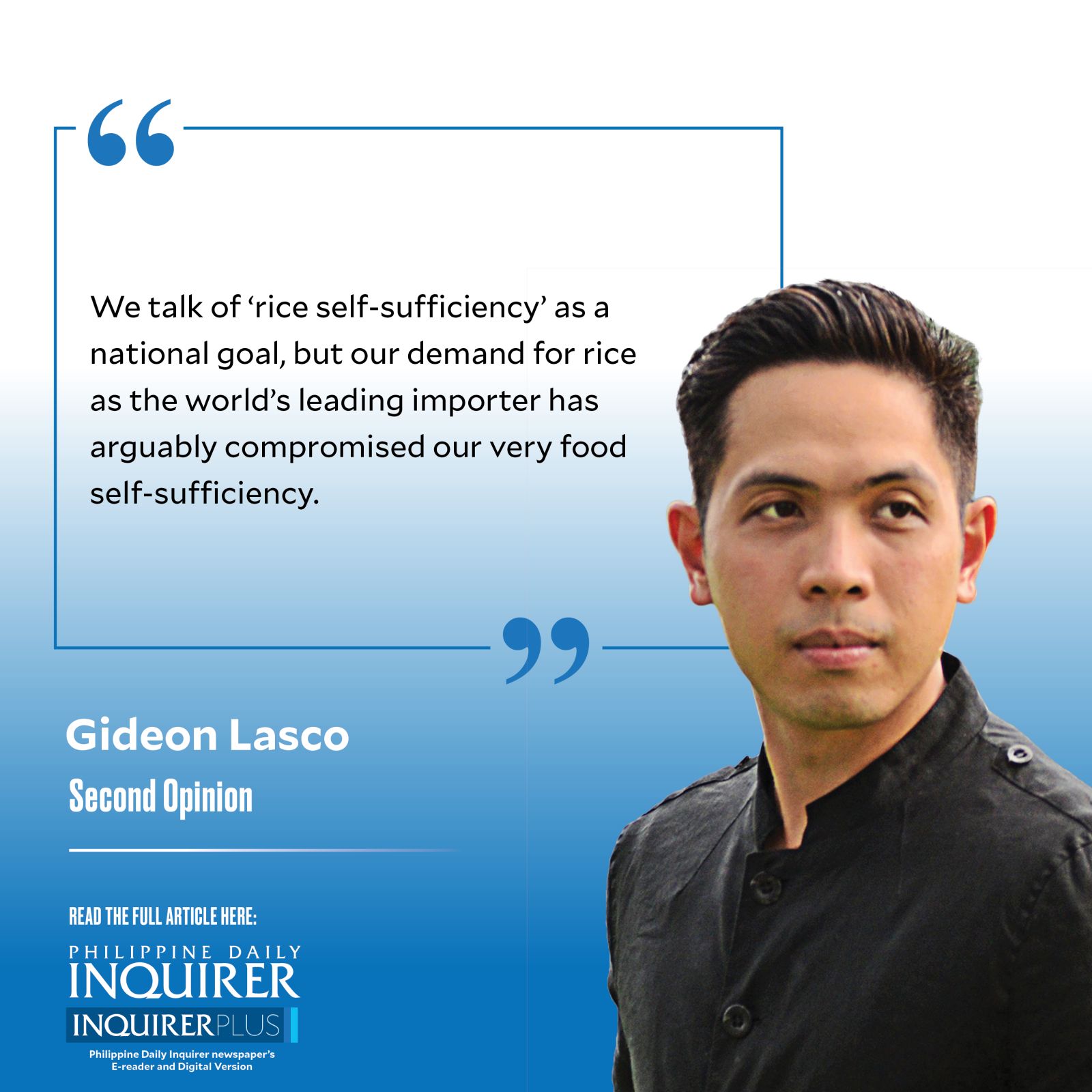Our bondage to rice

I was reminded of the centrality of rice in our culture recently, when I instructed someone to take a fasting blood sugar test, and the result was quite high. Upon probing, however, it turned out that she actually ate oatmeal for breakfast. “Hindi nga ako kumain (I really didn’t eat),” she insisted, explaining: “Nag-tinapay lang ako, hindi ako nag-rice (I only had bread, I didn’t have rice).”
For her—and for many Filipinos—it’s not “eating” (kain) if there’s no rice (kanin).
Article continues after this advertisementThe fact that many Filipinos eat rice thrice a day is something that we take for granted, and the best doctors can hope for is that they might change to healthier (and lower glycemic index) brown rice, or reduce rice intake. Similarly, the inexorability of rice in our national identity is seen as a given, which is why any attempts to amend it is bound to elicit a strong reaction (just ask Sen. Cynthia Villar).
But what if we problematize the very centrality of rice in our culture?
There are actually a number of good rationales for such a thought experiment, if we’re willing to let go of the sacredness and “culinary nationalism” with which we regard rice.
Article continues after this advertisementFirst, in terms of health, white rice is not the healthiest of grains, being highly polished and stripped of fiber and nutrients. Black, brown, and red rice—which keep the bran layer and the germ—are more nutritious, but they take much longer to cook and are usually more expensive than their white counterpart. And in any case, having a variety of carbohydrate sources is the healthiest strategy, which is why the Department of Science and Technology’s Food and Nutrition Research Institute has long been recommending root crops, legumes, and other grains to complement rice in our diet.
Second, rice is a very demanding grain in terms of agricultural production; it is a labor-intensive crop, requiring twice the number of hours as compared to wheat, and all kinds of infrastructure from irrigation to milling. All of this come with both social and economic costs. By subscribing to a rice-based diet (again, let’s assume that this is matter of choice), communities and entire islands once completely self-sufficient necessarily have to participate in a cash-based economy—one that has placed them at a severe disadvantage.
Writ large, our country’s overdependence on rice has macroeconomic implications, too. We talk of “rice self-sufficiency” as a national goal, but our demand for rice as the world’s leading importer has arguably compromised our very food self-sufficiency.
Beyond nutritional, agricultural, or economic rationales, the historical context is quite compelling. Most of us assume that rice is as old as our existence as a people, and while it is true that rice has always been part of our diet, it was not as central and essential as it is today. As the historian Filomeno Aguilar Jr. (2005) has documented, rice in precolonial times was a “prestige food” that was produced mostly in the uplands, and consumed by the elites far more than the commoners.
The sinigang can very well be a vestige of the past before rice became sine qua non; it has meat or fish for protein, kangkong, labanos, and kamatis as vegetables, and gabi as carbohydrate; it was already a complete meal even before rice is added. Even nilaga already has carbohydrates with potatoes and carrots. Although some of the ingredients I just mentioned—kamatis, patatas, are not native to the Philippines (neither is sili, which I personally consider essential), they nonetheless demonstrate a diversity of food possibilities that have existed in our cuisine for centuries.
What led to the all-encompassing embrace of rice? Surely, its taste and filling quality plays a big role, but a big factor was the very status of rice as a “prestige food,” Aguilar adds that rice’s emergent centrality was accompanied by its figurations in popular culture—from Fernando Amorsolo paintings to political imagery and even aphorisms like “a man should be like the palay.” As rice gained primacy, root crops became denigrated as mere survival foods, as my colleagues Rolando Esteban and Edwin Valientes (2018) document in the case of the Ivatans of Batanes. In our own research published in Acta Medica Philippina last year (Lasco et al. 2023), we found that Siargao has many root crops that could make them more resilient in times of disaster, but knowledge to prepare them is fast being forgotten.
Can we argue that the ways in which rice has dominated our landscapes, diets, and cultural imaginaries constitute a form of “botanical colonization”?
Of course, I am only being provocative. I would not think of removing rice in our national diet, nor in mine. And I have no allegiance to an essentialist view of culture, fully believing (and embracing) the fact that it is ever-changing.
But perhaps the realization that rice was not always part of our diet can make us rethink the future of agriculture, and, at an individual level, encourage us to reconsider our own food choices.
Rice will always hold a special place in our stomachs and hearts—but we may want to leave space for others.
—————-
glasco@inquirer.com.ph
















